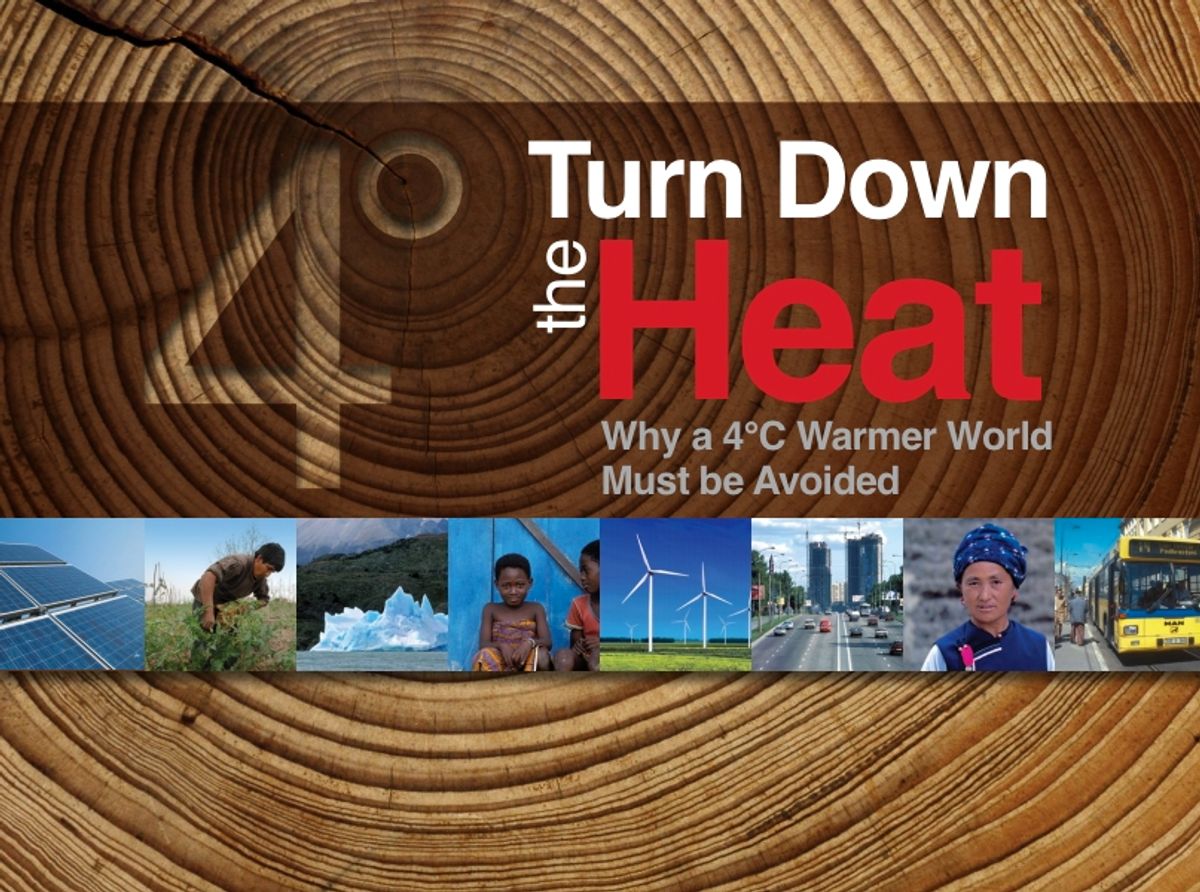"It is my hope that this report shocks us into action."
There is no mistaking World Bank Group president Jim Yong Kim's goals here; that statement begins his introductory note to the World Bank's newest report, titled Turn Down the Heat. The report is a striking look not into how we could mitigate global warming, but into what will happen if we don't. If the global energy picture doesn't change dramatically in the next few years, and the world continues along the pathway known commonly as "business as usual," projections put the average global temperature 4°C warmer by 2100, at the least. As Kim writes, the results of that seemingly minuscule temperature increase would be "devastating":
"The inundation of coastal cities; increasing risks for food production potentially leading to higher malnutrition rates; many dry regions becoming dryer, wet regions wetter; unprecedented heat waves in many regions, especially the tropics; substantially exacerbated water scarcity in many regions; increased frequency of high-intensity tropical cyclones; and irreversible loss of biodiversity, including coral reef systems."
The World Bank notes that present carbon dioxide emissions sit at around 35 000 million metric tons per year, and without major policy shifts, will rise to 41 000 million metric tons by the end of this decade. As we wrote last week, the International Energy Agency warns that 80 percent of the emissions we are allowed in order to stay below a 2°C increase are already locked in by our energy use and infrastructure, with the remaining 20 percent accounted for by 2017 if we don't do something drastic. In other words, 4°C is very much in play.
And the specific results of such warming are downright terrifying. Every part of the globe would be affected, though the poverty-minded World Bank notes that some of the poorest regions would likely receive the brunt of the damage. And the report devotes a section to the difficult-to-assess question of non-linearity: is the impact of 4°C simply twice that of 2°C? "Lurking in the tails of the probability distributions are likely to be many unpleasant surprises," the report authors write. Such sinister effects include changes in extreme weather patterns, rapid rainforest dieback that could itself feed back on the system and worsen warming further, and nonlinear impacts of reduced resources on population resiliency, just to name a few. The point is this: the things in whose occurrence we can have confidence are plenty bad; the things we can't model as well could make the bad even worse.
It is impossible to picture such a world and deem it acceptable. And though many of these potential impacts have been known for years, or even decades, at this point, there have been no major policy shifts that would forestall them. The World Bank authors conclude, "the projected 4°C warming simply must not be allowed to occur—the heat must be turned down. Only early cooperative, international actions can make that happen." I might argue that "early" is already out; the possibility that it is "too late" is still up in the air.
Image via World Bank
Dave Levitan is the science writer for FactCheck.org, where he investigates the false and misleading claims about science that U.S. politicians occasionally make.




